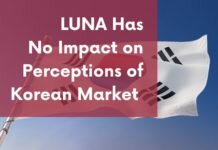ICON may be an international platform, but they are headquartered in Seoul, South Korea. As ICON is referenced often in the Korean media, our editorial team here at The Iconist thought it might be useful to clue international readers in to the general media landscape in South Korea. It is our hope that this will help put things into a clearer perspective for our global audience.
It has been said time and time again that South Korea is an extremely well-connected country. The stats back this up too: smartphone penetration is now the highest in the world at 95%, according to a 2019 Pew Research Center report, and a government survey found that over 99% of Korean households have internet access.
With this in mind, it should go without saying that the news media landscape in South Korea has also shifted dramatically over the years to become very online-dominant. These days, most Koreans read or watch the news on their mobile devices.
Traditional News Media
While there are a number of major dailies in South Korea, the three top dailies—Chosun Ilbo, Joongang Ilbo and Dong-a Ilbo—are extremely influential in forming public opinion and setting the agenda for public debate. These three papers are well-known for being pro-business and supportive of the big Korean conglomerates. Joongang Ilbo in particular has close ties with Samsung.
All of the papers have English versions, but they are generally quite limited and promote a view of Korea that Koreans would like foreigners to believe about the country. One notable exception is the English version of the Korea Joongang Daily. Maeil Business newspaper, somewhat akin to WSJ or FT, also has an English publication called Pulse that’s quite informative. Furthermore, while this writer can not recommend the Korea Herald at all, The Investor, their business publication, is greatly improved and trending toward exceptional.
The major TV broadcasters (MBC, SBS and KBS) are more liberally slanted in their news. However, recent changes to laws have allowed the newspapers to open their own competing channels.
Online Influence
In addition to these traditional news sources, online influencers have also become especially important for brand exposure. These influencers tend to be on global channels like Instagram and Youtube, as well as local channels like Brunch, a Korean language competitor to Medium.
Google is not anywhere near as widely used, with Korean search portal competitor Naver enjoying a 70% market share. Naver also functions more like an information hub than Google does, with instant access to trending stories and online “cafes” where people can chat about hot issues. It is often said that in Korea, “every crisis is an online crisis.” With a population of 51 million people all interconnected on the ‘net, everyone can be a netizen, as online chat club members are commonly called. Gossip travels incredibly quickly.
At a Glance
The Press Scene
While South Korea has enjoyed dramatic increases in freedom of the press since its democratic movement of 1987, up until recently most journalists and publications maintained overly close relationships with the companies they covered. The Kim Young-ran Act, an anti-corruption law passed in 2015, put an end to the lavish press conferences and expensive press junkets that were once the norm by prohibiting gifts to journalists of more than $30.
Rather predictably, major companies like Samsung, LG and Hyundai (among others) receive the heaviest coverage on Korean news sites. These companies are so big that each major publication dedicates specific journalists to cover individual companies as specific beats. Because of this, all of these big corporations still have special in-house (often smokey) press rooms for journalists covering them to use.
With Korea’s startup ecosystem now maturing, however, the conglomerates are not the only news-makers any longer. New tech giants like ICON are starting to get coverage by the mainstream publications, capturing the public interest, and causing a netizen sensation.







